
Ophthalmology Science
Scope & Guideline
Unlocking New Horizons in Eye Health
Introduction
Aims and Scopes
- Clinical and Translational Research:
The journal emphasizes clinical and translational research that bridges the gap between laboratory findings and clinical applications, enhancing patient care in ophthalmology. - Innovations in Diagnostic Techniques:
There is a strong focus on developing and validating new diagnostic methods, particularly using advanced imaging techniques like OCT, which are crucial for early detection and monitoring of ocular diseases. - Artificial Intelligence and Machine Learning:
The integration of artificial intelligence and machine learning in ophthalmology is a significant area of research, aimed at improving diagnostic accuracy and treatment personalization. - Pathophysiology of Ocular Diseases:
Research exploring the underlying mechanisms of various ocular diseases, including diabetic retinopathy, age-related macular degeneration, and glaucoma, is a core area of interest. - Public Health and Epidemiology:
The journal also addresses the public health aspects of ophthalmic diseases by examining epidemiological trends and health disparities in eye care. - Novel Therapeutic Approaches:
There is a focus on clinical trials and studies investigating new therapeutic interventions, including gene therapy and new pharmacological agents for ocular diseases.
Trending and Emerging
- Artificial Intelligence in Ophthalmology:
The incorporation of AI and machine learning into diagnostic and therapeutic strategies is rapidly expanding, reflecting a trend towards automation and enhanced accuracy in ophthalmic care. - Ocular Imaging Advances:
Recent publications show a significant increase in research focused on advanced imaging technologies, particularly OCT and its applications in diagnosing and monitoring retinal diseases. - Personalized Medicine and Treatment Approaches:
There is a growing emphasis on personalized medicine in ophthalmology, with studies focusing on tailoring treatments based on genetic, environmental, and individual patient factors. - Impact of Systemic Health on Ocular Disease:
Research linking systemic health conditions, such as diabetes and cardiovascular diseases, to ocular health is on the rise, highlighting the interconnectedness of systemic and eye health. - Telemedicine and Remote Monitoring:
Telemedicine applications, particularly in remote monitoring and virtual consultations, are emerging as crucial components in ophthalmic care, especially post-pandemic. - Emerging Therapies and Biologics:
There is an increasing focus on novel therapeutic agents, including biologics and gene therapies, aimed at treating complex ocular conditions more effectively.
Declining or Waning
- Traditional Surgical Techniques:
Research related to traditional surgical techniques for ocular diseases appears to be declining, as the focus shifts towards less invasive, technologically advanced approaches and novel therapies. - Basic Science Studies Without Clinical Application:
There is a noticeable reduction in studies that focus solely on basic science without a clear path to clinical application, as the journal increasingly prioritizes translational research. - Historical Epidemiological Studies:
While epidemiological studies remain important, those focusing solely on historical data without addressing current trends or interventions are becoming less common. - General Ophthalmic Reviews:
General reviews of ophthalmic literature without a specific focus or innovative angle are declining, as the journal seeks to publish more targeted and impactful research.
Similar Journals

Augenheilkunde Up2date
Enhancing Expertise in Vision Science.Augenheilkunde Up2date is a pivotal journal in the field of ophthalmology, published by GEORG THIEME VERLAG KG, a renowned publisher known for its commitment to advancing medical knowledge. With its ISSN 1616-9719 and E-ISSN 1616-9735, this journal serves as a vital resource for researchers, professionals, and students interested in the latest developments and nuanced discussions in eye health. Although not available as open access, its curated content offers significant insights into contemporary research, clinical practices, and emerging trends in ophthalmology, thus promoting the continuous professional development of its readers. There is an emphasis on providing comprehensive reviews that encapsulate the pertinent advancements in the field, making it an essential publication for those aiming to enhance their expertise in eye care and vision science.

International Journal of Retina and Vitreous
Exploring breakthroughs in retina and vitreous science.The International Journal of Retina and Vitreous, published by BMC, stands as a premier open-access platform dedicated to advancing the field of ophthalmology, specifically focusing on retina and vitreous research. Established in 2015, this journal has swiftly positioned itself within the academic community, achieving a commendable Q2 category ranking in Ophthalmology for 2023, and ranks #49 out of 137 in Scopus for Medicine - Ophthalmology, indicating its growing influence and reach within the scientific landscape. The journal is committed to disseminating high-quality research, reviews, and clinical insights that explore innovations, challenges, and breakthroughs in ocular health. With the goal of fostering knowledge exchange among researchers, practitioners, and students, the International Journal of Retina and Vitreous promotes an open-access model, ensuring that vital findings are readily available to a global audience. This journal not only serves as a vital resource for advancing the understanding and treatment of retinal and vitreous diseases but also aims to inspire future studies in this critical area of eye health.
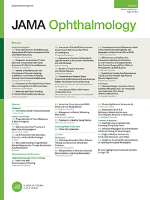
JAMA Ophthalmology
Pioneering Insights in OphthalmologyJAMA Ophthalmology, the premier journal in the field of ophthalmology, is published by the esteemed American Medical Association. Renowned for its rigorous peer-review process and commitment to advancing eye health research, JAMA Ophthalmology holds a prestigious position in the scientific community, boasting an impressive impact factor and ranking as Q1 in the category of Ophthalmology. With a Scopus rank of #3 out of 137 in its field and a remarkable 98th percentile, the journal serves as an invaluable resource for researchers, healthcare professionals, and students dedicated to the ophthalmic sciences. Readers can explore a wealth of cutting-edge findings, clinical studies, and review articles that not only contribute to the sustainable advancement of ophthalmic knowledge but also foster innovative approaches in patient care. As we converge into 2024, the journal continues to embrace open access principles, ensuring that groundbreaking research is readily available to a global audience, enhancing collaborative efforts and furthering the development of the ophthalmology discipline.

Nepalese Journal of Ophthalmology
Pioneering Discoveries in Nepalese OphthalmologyNepalese Journal of Ophthalmology, established by the NEPAL OPHTHALMIC SOC, is a premier Open Access journal dedicated to advancing the field of ophthalmology. With its ISSN 2072-6805 and E-ISSN 2091-0320, the journal provides an important platform for sharing innovative research and clinical findings in eye health. Since its inception in 2009, the journal has aimed to disseminate high-quality research that addresses contemporary challenges in ophthalmic practices, thus supporting improved patient care and outcomes within Nepal and beyond. The journal has achieved notable recognition, evidenced by its Scopus rank of #267 out of 915 in the field of General Medicine, placing it within the 70th percentile. Researchers, professionals, and students will find valuable information in its comprehensive articles, which cater to a multidisciplinary audience interested in the latest developments in ophthalmology. Emphasizing accessibility, the journal ensures that all published content is freely available, fostering collaboration and knowledge sharing in the global medical community.
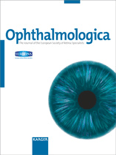
OPHTHALMOLOGICA
Illuminating the Future of OphthalmologyOPHTHALMOLOGICA is a prestigious journal published by KARGER, dedicated to the dynamic field of ophthalmology and its interdisciplinary connections with medicine and sensory systems. With a rich history spanning over a century since its inception in 1899, this journal is esteemed for its high-quality research and impactful contributions, maintaining an impressive Q1 quartile ranking in both ophthalmology and miscellaneous medicine as of 2023, alongside a notable Q2 status in sensory systems. The journal's influence is reinforced by its Scopus rankings, where it ranks 26th out of 137 in ophthalmology, showcasing a strong percentile position of 81. Based in Basel, Switzerland, OPHTHALMOLOGICA serves as an essential platform for researchers, professionals, and students, providing essential insights, reviews, and studies that push the boundaries of knowledge in the vision sciences. Although it does not currently offer open access, its contributions are critical for those pursuing advancements in ocular health and related disciplines.
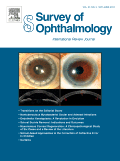
SURVEY OF OPHTHALMOLOGY
Shaping the Future of Eye Care ResearchSURVEY OF OPHTHALMOLOGY is a premier journal published by Elsevier Science Inc, dedicated to advancing knowledge in the field of ophthalmology. With an impact factor reflective of its high-quality research—ranking 7th out of 137 in the Scopus category for medicine and ophthalmology, this journal maintains a prestigious Q1 categorization in its field for 2023. Since its inception in 1956, the journal has provided comprehensive reviews and original articles covering various aspects of ophthalmic research and clinical practice, supporting the ongoing education of researchers, professionals, and students alike. While open access options are not available, the journal remains an essential resource for the latest developments, discoveries, and expert insights that shape the future of eye health. Based in the United States, at STE 800, 230 Park Ave, New York, NY 10169, the journal continues a legacy of excellence in ophthalmology until 2024 and beyond, making it a pivotal element of scholarly discourse in this vital medical discipline.

Eye and Vision
Exploring the depths of ocular research and clinical excellence.Eye and Vision, published by BMC, is a leading open-access journal dedicated to the dynamic field of ophthalmology and visual sciences. With its ISSN 2326-0246 and E-ISSN 2326-0254, the journal has established itself as a premier platform for innovative research and clinical studies, achieving impressive rankings in 2023 as Q1 in both Health Professions (Miscellaneous) and Ophthalmology categories. The journal's commitment to accessible knowledge since its transition to open access in 2015 enhances its global reach, allowing researchers, clinicians, and students to share and access top-tier studies and advancements in the field. Located in the United Kingdom and delivering influential insights from 2014 through to 2024, Eye and Vision holds significant relevance, with a Scopus ranking placing it in the 99th percentile for Health Professions and the 93rd percentile for Ophthalmology, making it an essential resource for those looking to stay at the forefront of eye research and vision science.
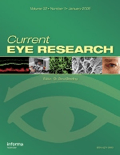
CURRENT EYE RESEARCH
Pioneering Research for a Brighter VisionCURRENT EYE RESEARCH is a prestigious academic journal published by Taylor & Francis Inc, focusing on advancing the field of ophthalmology and its intersection with cellular and molecular neuroscience. Since its inception in 1981, this journal has provided a vital platform for original research, reviews, and technical notes, presenting a wealth of knowledge to practitioners and researchers alike. With an impressive 2023 impact factor reflected in its ranking of Q2 in Ophthalmology and Q2 in Sensory Systems, and a Q3 ranking in Cellular and Molecular Neuroscience, CURRENT EYE RESEARCH plays a crucial role in fostering interdisciplinary collaboration and innovation. The journal is indexed in Scopus, where it holds strong positions in both the Medicine and Neuroscience categories, enhancing its visibility and reach. Researchers and professionals in these fields can access cutting-edge findings and contribute to the ongoing discourse surrounding eye health, making it an essential resource for anyone invested in advancing knowledge and treatment in ophthalmic science.

GRAEFES ARCHIVE FOR CLINICAL AND EXPERIMENTAL OPHTHALMOLOGY
Advancing the Frontiers of Vision ScienceGRAEFES ARCHIVE FOR CLINICAL AND EXPERIMENTAL OPHTHALMOLOGY, published by Springer, has established itself as a premier journal in the field of ophthalmology since its inception in 1870. With an ISSN of 0721-832X and an E-ISSN of 1435-702X, this esteemed journal enjoys a notable impact in the research community, ranking Q1 in Ophthalmology and Q1 in Sensory Systems, as per the latest 2023 journal category quartiles. GRAEFES Archive is dedicated to advancing our understanding of ocular health through both clinical and experimental studies, making it an essential resource for researchers, practitioners, and students alike. Its comprehensive scope covers various aspects of ophthalmic science, reflecting its long-standing commitment to quality and excellence. Although it currently operates on a subscription basis, the journal's significant Scopus rankings—24th out of 137 in Ophthalmology—underscore its relevance and influence within the scientific community. Situated in Germany, with its address in the United States, this international journal continues to shape the discourse on vision science and therapeutic innovation.
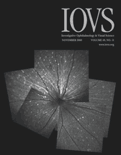
INVESTIGATIVE OPHTHALMOLOGY & VISUAL SCIENCE
Advancing the frontiers of vision science.Investigative Ophthalmology & Visual Science (IOVS) is a leading academic journal published by the Association for Research in Vision and Ophthalmology, dedicated to advancing the field of ophthalmology and visual science. With an impressive impact factor and ranking in the Q1 category for both Ophthalmology and Sensory Systems, IOVS is well-respected for disseminating cutting-edge research and innovative discoveries. Established in 1977, this Open Access journal allows for broad accessibility to pioneering studies, fostering collaboration among researchers, clinicians, and students. The journal has consistently maintained high visibility in the academic community, evidenced by its robust rankings in Scopus, including Rank #16 in Ophthalmology. As it continues to pave the way for future developments in the understanding and treatment of ocular diseases, IOVS serves as an invaluable resource for those immersed in the complex field of visual science.